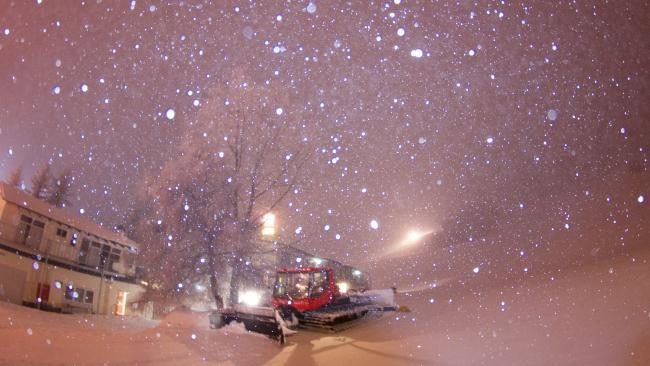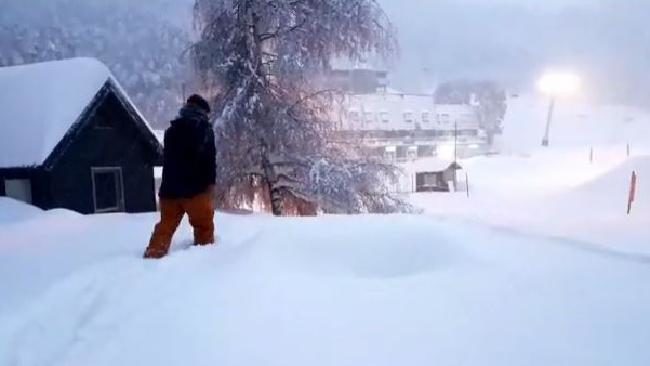
The Antarctic blast has delivered huge dumps on resorts such as Falls Creek
A pair of so-called "thundersnow" storms crashed through parts of NSW and Victoria on Sunday and early Monday morning.
If your idea of snow falling is fluffy flakes peacefully landing on peaceful mountain summits, think again.
A thundersnow storm is wild, the winds are fierce and directly beneath the epicentre it's a noisy affair.
It also has unique attributes, including brighter than usual lightning.For the bosses of Australia's ski resorts, thundersnow is a blessing rather than a curse — bringing huge dumps of snows to the slopes.
The storms have been the centrepiece of a snow spectacular across the continent's south-east.
A series of polar lows have brought blizzards to higher ground with the white stuff even falling in the NSW Central Tablelands, far from the ski resorts."We had two bands of thundersnow hitting the Victorian and NSW Alps on Sunday, one during the afternoon and another one overnight,"
Sky News Weather meteorologist Tristan Myers told news.com.au.
"Half a metre to a metre of snow fell across the Alpine resorts over the weekend, coupled with blizzards where winds gusted above 130km/h at Thredbo.
"Although winds were fierce, we still got the best snowfall we've seen this season," he said.
Images from Falls Creek in Victoria have shown thick snow blanketing the resort following the thundersnow.
"Thundersnow is a phenomena where rather than rain, snow falls in a storm," said Mr Myers.
But while it sounds simple enough, it's actually relatively rare due to the limited amount of time conditions are cold enough for the storms to form.
The Bureau of Meteorology doesn't use the word "thundersnow" as an official weather term but the UK's Meteorological Office is less fussy on the terminology.

The snow was thick in Falls Creek
"Thunderstorms develop when warm air under colder air wants to rise," the organisation states.
"If the weather is cold the rain associated with a thunderstorm can then fall as snow and thus is called thundersnow (and) can only occur in a few months of the year."
The Great Lakes of North America are the most likely places to experience thundersnow,
northern Europe less so and it's almost unheard of in Australia.But it has happened before with thundersnow roaring through the Blue Mountains, west of Sydney, in July 2015.In January, parts of the UK were also hit with
thundersnow storms.The snow has some interesting effects on the storm. For a start, the lightning appears to be brighter as it reflects off the flakes.
But if the strikes are move vivid, the sound of the thunder is more muffled as the snowflakes dampen the noise.
"While the thunder from a typical thunderstorm might be heard many miles away, the thunder during a thundersnow event will only be heard if you are within two to three miles (3-5 kms) of the lightning," the UK Met Office states.
A series of severe weather warnings have been lifted following the thundersnow storms passing. But in good news for skiers heading to the peaks, the snow is set to continue.
"It looks like there will be more heavy snow showers for the Alps, tomorrow," said Mr Meyers.
"As high pressure builds tomorrow, we will see some of the best skiing conditions we've seen this season — fresh powder and sunny breaks."
Reader Comments
to our Newsletter